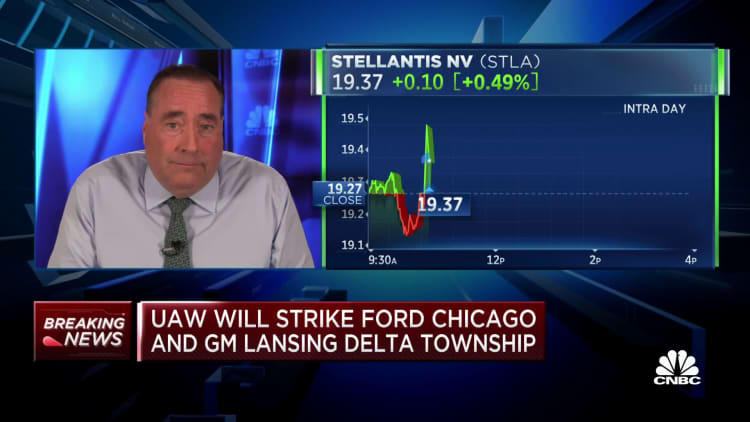
In March 2021, American parents got something unexpected: help. That month, Congress passed the American Rescue Plan, which allocated a whopping $24 billion to childcare providers as part of The Child Care Stabilization Program. This came after childcare expenses soared for decades into what Treasury Secretary Janet Yellen called “a textbook example of a broken market.”
But that helping hand is being turned away, and parents brace for a slap in the face this September 30th. Pandemic assistance is set to expire this weekend, leaving America on the edge of what many experts and politicians are calling a childcare cliff that will impact providers, parents, and children.
America’s infrastructure for children and working parents has been on shaky legs for decades thanks to poor compensation and working conditions for staffers, as well as a lack of federal investment that left working parents with limited and unaffordable childcare options. The crisis only sharpened during the pandemic’s hiring shortage, which further strained childcare centers and led to burnout and turnover.
The blowback will shutter one-third, or 70,000, of funded childcare centers, according to a report from liberal think tank The Century Foundation. It projects that more than 3 million children will go without care, forcing some working parents to leave the workforce entirely, creating an annual $9 billion ripple effect in the economy. Employers and taxpayers stand to lose $23 billion and $21 billion a year, respectively, as parents struggle to work productively without assisted childcare, per the Council for a Strong America.
“Our childcare system, it’s not just stretched thin, it’s broken,” Jill Koziol, CEO of parenting platform Motherly, tells Fortune. “We’ve had this bandaid on it with this federal support that’s about to expire. But everyone loses ultimately when parents don’t have access to childcare.”
Many Democratic lawmakers are trying to plaster another $16 billion bandaid to address the cliff, but with a government shutdown looming, passing it in time seems unlikely. “Our country’s childcare problems long predated the pandemic, and now, Republicans are threatening to push childcare funding off a cliff,” Senator Elizabeth Warren said in a statement to Fortune. “Congress must pass $16 billion in emergency childcare funding to prevent millions of parents from needing to scramble or leave the workforce altogether.”
Childcare centers that don’t shut down will likely be forced to lay off already underpaid employees. The lack of stimulus will mostly hit facilities with underfunded programs, which Koziol says often serve lower-socioeconomic households headed by frontline workers who often can’t work from home or work without childcare. Childcare costs will also likely become even higher; about 40% of childcare providers said they’ll likely have to raise prices when funding ends, per a 2022 survey from the National Associate for the Education of Young Children. This could price out the middle class, Koziol says. And, because of gendered assumptions regarding childcare, it’s often women who work outside the home that feel the brunt of this systemic failure.
An (im)perfect storm will hit working moms
Since childcare has been a mess for so long, the impact of the end of funding will be a slow fall but long-lasting, Julie Kashen, senior fellow and director for women’s economic justice at The Century Foundation, tells Fortune. The conversation surrounding the childcare crisis often “gets caught up” in whether the government should be involved, she says, but what folks really want is for the government to help with the resources “so that we get it off the backs” of parents, children, and disproportionately women of color as well as childcare workers, who are paid less than $12 hourly on average. At the end of the day, childcare workers are often paid less than dog walkers, Kashen adds.
“Too often we hear the rhetoric ‘if you can’t afford kids, don’t have them,’” she says. “But having children isn’t like buying an in-home sauna or a fancy car, and it certainly should not be reserved for the wealthy.” But the reality is that affordable care is treated like a privilege and not a right, as Kashen explains only the rich can afford childcare or unpaid leave right now.
While the childcare cliff will have lasting effects on many people in both rural areas and cities, she says, working moms are the ones who will end up paying the biggest price for the federal fallout. They’re already dealing with the “motherhood penalty,” in which their career suffers after having a child—being passed over for promotions, earning lower salaries, or being forced to drop out of the workforce altogether. Even female breadwinners aren’t immune. The cards thus aren’t stacked in the mothers’ favor when parents are forced to make the difficult choice to prioritize one partner’s income.
This past spring, households reported that they spend more than a quarter of their income on childcare. That just so happens to be the dealbreaker cost at which nearly half of parents with kids under five would consider becoming a stay-at-home parent, per a survey conducted by Fortune and Harris poll earlier this year. While the pervading sentiment is that the partner making the most money should stay employed, the gender gap and sexist cultural assumptions means that in heterosexual relationships, that role often falls to the man. Research has shown that men are not as expected or as likely to quit their jobs to pick up the slack when it comes to childcare. Although stay-at-home dads are more common than they used to be, the stay-at-home parent usually ends up being the mother, with highly educated women especially taking the fall.
“We as a society have imposed a false equation on families and on mothers, where we attach the cost of childcare to the mothers’ income, not the family income. That false equation means that whenever childcare costs go up, the value of the mother in the workforce declines,” explains Motherly’s Koziol, adding that it has catastrophic consequences for the economy considering that women are the most educated cohort. The childcare cliff could also feed into other industries women are active in, such as teaching, which is already experiencing a shortage crisis, adds Kashen.
While not a solution, flexible working arrangements became a salve for many mothers who could piecemeal childcare together while working from home. Early evidence shows that remote work helped ease the intensity of the balancing act for working parents, specifically mothers. The problem is that just as the federal bandaid is being ripped off, many companies are also issuing another round of return to office mandates—the corporate version of denying Advil.
In and out of the workforce
While many mothers bowed out of the workforce as the childcare crisis intensified during the early pandemic, many have since returned. But the lack of funding and a wane in flexibility threatens to change the tides once more. The number of stay-at-home mothers almost doubled from just 2022 to 2023, returning to the pre-pandemic baseline, according to Motherly data. “Last year was this perfect blend that showed us that there is a model to get more productivity out of mothers, to support our economy. You’re starting to see less elasticity in the system as a whole and mothers are opting out of the workforce,” says Koziol, noting that Motherly research finds one in four mothers have been let go due to childcare issues.
But not everyone has the option to leave the workforce, as inflation makes paying for childcare something mostly only dual-income families can afford, explains The Century Foundation’s Kashen. It’s why women, especially those of color, have always been in the workforce, she says.
“Even when there’s not enough childcare, sometimes they’re still making it work to stay in the labor force, even when it doesn’t really work,” she explains. This could result in higher labor force participation rates, even if it means mothers are “sacrificing their mental-and physical health to overwork themselves or finding less high-quality options.” At the same time, though, it’s still likely we could see women leave the labor force altogether, she adds.
America’s embedded history of racism made it so that women of color long worked outside the home more; Black and Latina women have historically had to cobble together childcare while shouldering the underpaid job of taking care of white women’s children, too. When Yellen speaks of a broken model, it’s because the current working system was not meant for the workforce we have today to thrive.
But Koziol believes the nation can make strides towards a future of affordable childcare, since it was once part of our history. America had universal childcare during World War II when men were overseas and there was an unprecedented level of respect and need for women who filled in for them back home, Koziol explains. “When we value women in the workforce, we find a way to make it work,” she says. But Congress didn’t extend the program and general assistance after the war, leaving America grappling with a childcare crisis.
Eighty years later, history is exposing its roots. While Kashen is hopeful that $16 billion in funding will be passed to address the cliff before the end of the year, that still leaves a lapse in the system this fall. “America’s public and workplace policies were built on the assumptions that men would be in the paid workforce with wives at home to take care of children; or that the undervalued and underpaid labor of Black, Latina, and immigrant women would cover families’ care needs,” she says. But “that’s not reality,” she continues. “It’s time to adopt public and workplace policies that catch up to this reality so that children, families, and our economy can thrive.”
Credit: Source link














